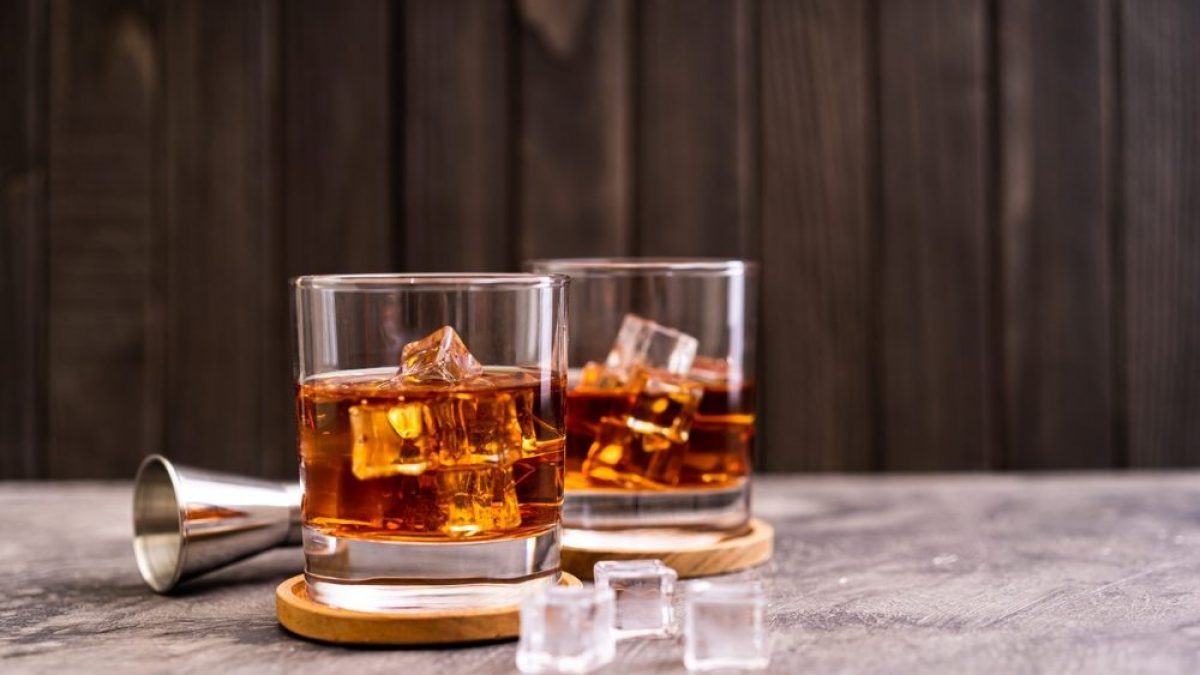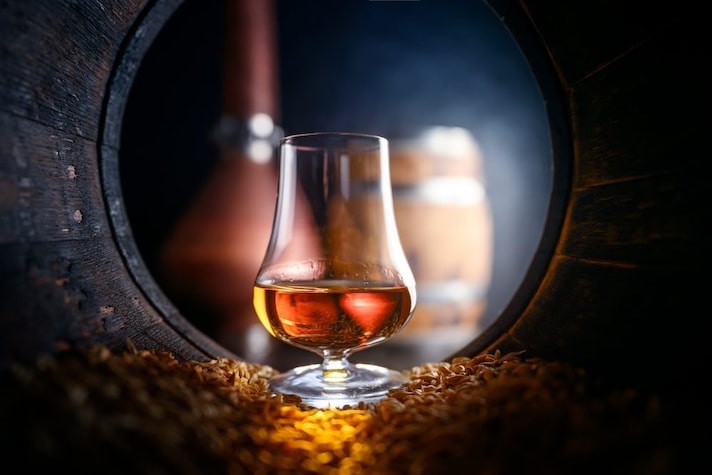
All bourbons are whiskey, but not all whiskeys are bourbon: it is with this sentence that we can give a first definition of this specialty that has a very specific homeland, namely the United States. We are talking, in fact, about an alcoholic beverage that since 1964, thanks to a legislative act of Congress (Congressional Resolution), has become a "distinctive product" of North America, with very specific characteristics and processing methods guaranteed by a specification. Bourbon is drunk neat, with ice cubes (on the rocks), but it is also the main ingredient of some of the most iconic cocktails such as the Mint Julep and the Old Fashioned. Let's go and discover it.
History and How is It Produced
Bourbon is the great protagonist of the history of North American distillation, an emblem of its style that has developed since the 18th century and is now famous throughout the world, with American Whiskeys that stand alongside Irish Whiskeys in terms of prestige and fame, and the whiskies ( without the e) that come from Scotland (Scotch), Japan and Canada. The origins of whisky in Europe date back to the Middle Ages, thanks to the production of the spirit by monks: it was Scottish, Irish and English immigrants who brought this product to the New World in the 18th century. In particular, the roots of bourbon lie in the state of Kentucky, around 1774 with the arrival of the first settlers and home distillation. In 1776, the Corn Patch & Cabin Rights Act offered 400 acres to those who planted and grew corn: corn is, in fact, the essential raw material of the so-called mash bill, or the initial mixture of cereals from which the final distillate is obtained.
How is it done? In this case the rules are strict, as by law the bourbon must have at least 51 % corn, while the rest can be rye and malt, depending on the taste and aromas you want to impart. The other ingredients are water and yeast. The cereals are ground, combined with hot water in large tanks and then undergo fermentation which occurs with the addition of yeast. The distillation is double and consists of a first phase in the beer still (a copper column that separates the alcohol from the water) and the second in the still called a doubler, which can be pear- or barrel-shaped: at this point the alcohol content according to the law cannot exceed 80% vol (which corresponds to 160 proof, the American unit of measurement). The beer is then placed in oak barrels (strictly new and carbonized): the liquid is diluted with further water, where the addition of colorants, aromas or other alcoholic beverages is prohibited, without exceeding 125 proof (62.5% vol).

How much does it age? It depends on the manufacturing company: there is no time requirement in the specifications. The classic American Straight Bourbon Whiskey is subject to federal rules that establish that the indication on the label is possible only after maturation of at least 2 years. Generally, all bourbons are aged for no less than 4 years, with an average of 6-7. The final alcohol content cannot be less than 40% vol (80 proof).
Differences From Other Whiskies
Bourbon, as we have seen, is one of the most famous North American whiskeys. It can be legally distilled in all of the United States, but production is concentrated in six states: Georgia, Pennsylvania, California, Illinois, Indiana and the aforementioned Kentucky, which boasts 95% of the total. Compared to other types of whiskey (and whisky), it has some peculiarities that make it recognizable: let's see what the main ones are.
- Use of corn: the cereal at the base of bourbon is corn (at least 51%), which gives it its soft and sweet note and a lighter, amber color, compared to, for example, Scotch Whisky, where the star is malt. Other North American whiskeys instead see rye, more spicy, as a fundamental ingredient (always 51%) and are called rye whiskey. The same minimum quantity of corn, on the other hand, is needed for Tennessee Whiskey, another must-have from the stars and stripes (Jack Daniel's above all) which differs only in one step in the processing: it is filtered with sugary white maple charcoal before being left to age, giving greater clarity and softness.
- Use of proprietary yeasts: these are called house yeasts and, although they are also used for other whiskeys, in bourbon they are the norm. These are cultures that are specifically selected by individual companies and not commercialized. The final product is less standardized, since the fermentation process is essential to give the distinctive character.
- Use of new and charred barrels: Bourbon ages exclusively in North American white oak barrels, never used before and which are toasted, so as to give a more or less delicate smoky scent. The birth of this practice is probably due to the fact that in the States there was no peat available, which the Scots burned to obtain their prized peated whiskey and that, therefore, necessity was made a virtue. Obviously, there is no shortage of legends about it: there are two and they have as their protagonist Elijah Craig, the reverend considered the father of bourbon (the brand still exists), who distilled his whiskey even after his barrels had caught fire, thus discovering the remarkable final result. One version says that it was a fire that burned them, the other that it was Craig's work, to remove the smell of the fish that was preserved inside.
We conclude with a curiosity about the name, which is also unique and still “mysterious”, as it recalls France. Some historians link it to the Bourbon family, who helped the colonists during the American War of Independence, which lasted from 1775 to 1783: in Kentucky, in 1785, Bourbon County was established in honor of Louis XVI. Others, however, maintain that it comes from the famous Bourbon Street in New Orleans, given that in the 19th century, whiskey trade from Kentucky traveled down the Mississippi to the port city in Louisiana.
;Resize,width=767;)
